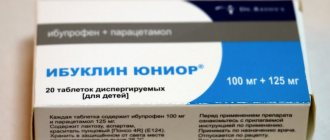Often, with certain illnesses, after a head injury or while drinking alcohol, people feel dizzy. This is not a separate disease, but only a symptom of a number of diseases. It can occur when there is a problem with the inner ear, brain, or sensory nerve pathways that carry information from the senses such as the ear, eye, or nose to the centers of the brain.
Dizziness can happen at any age, but it is more common in people age 65 and older. The condition may be temporary or long-lasting, especially if it is a sign of inflammation of the middle or inner ear (such as Meniere's disease). Accordingly, before choosing pills for dizziness, you need to determine the cause of the problem together with your doctor. In this case, the symptom can be eliminated quickly and effectively.
A person with dizziness may have problems with balance and consciousness, lightheadedness, nausea, and pain. Dizziness itself is a feeling as if the room or environment is spinning around the person. Many people use this term to describe their fear of heights, but this is not entirely correct. The sensations and manifestations will be different (although similar).
Dizziness can happen when a person looks down from a great height, but usually the term refers to any temporary or permanent attack that occurs due to problems in the inner ear or brain. Accordingly, help for dizziness consists of finding and treating the causes that lead to the problem. And any medications “for dizziness” are symptomatic therapy, eliminating only the unpleasant sensations themselves, but perhaps not affecting their causes. Therefore, the first step in treating dizziness is to visit a neurologist or therapist, and if it is ear pain, an ENT doctor.
Rating of the top 5 tablets for dizziness according to KP
It is important to understand that only a doctor can prescribe a specific medicine. Our review is based on the most commonly prescribed drugs that are used for various pathologies; it is reference information and is not a guide to action. All appointments should be discussed with a neurologist.
Dramamine
Dramamine. Photo: Jadran
The drug is available in tablet form, the main active ingredient is dimenhydrinate. Dispensed from pharmacies without a prescription. The drug is used for motion sickness to inhibit excessive activity and reduce the flow of impulses from the vestibular apparatus. It has an antiemetic effect, suppresses nausea and dizziness when traveling in any type of transport, and has a mild antiallergic effect.
It is important to pay attention to the side effects of taking it - severe dryness of the mouth and nasal cavity, increased blood pressure, headaches and sleep disturbances. The drug is prohibited for hypertension, pregnancy and young children (under 2 years). It has a sedative effect, is prohibited when driving, and is incompatible with alcohol.
show more
Betaserk
Betaserk. Photo: Mylan Laboratories SAS
The drug is available in tablets, the main active ingredient is betahistine. Dispensed with a doctor's prescription. It affects the receptors in the inner ear and the perceptive centers in the brain itself, which receive information from the vestibular apparatus. Helps improve blood circulation in the arteries of the inner ear and brain, saturates the blood with oxygen.
Indications for use include not only various pathologies of the vestibular apparatus, but also cerebral circulation disorders of vascular origin, causing dizziness. Helps reduce the frequency of dizziness attacks, reduces their severity, eliminates tinnitus and nausea. Taken according to the regimen recommended by the doctor.
The drug is prohibited in the presence of gastric or intestinal ulcers, bronchial asthma or the presence of pheochromocytoma. Do not take in the first trimester of pregnancy or in childhood.
Anvifen
Anvifen. Photo: Pharmproject
The drug is available in tablets, the active ingredient is aminophenylbutyric acid. Dispensed with a doctor's prescription. The drug helps with motion sickness and dizziness when traveling in public transport. It has sedative and hypnotic effects, normalizes metabolism in brain cells and blood circulation in cerebral vessels. It has a slight anticonvulsant effect, calms the nervous system, relieving excitability. Indicated for Meniere's disease, dizziness due to stress, neuroses with stuttering or enuresis, insomnia and motion sickness at sea, in cars.
Helps in stimulating performance, improving attention and memory, allowed from three years of age.
People with damage to the digestive system should take it with extreme caution; it is prohibited during pregnancy. Incompatible with alcohol, prohibited for use when driving a car and work associated with maximum concentration.
Vinpocetine
Vinpocetine. Photo: Izvarino Pharma
Available in tablets and solution for intravenous administration, the main active ingredient is vinpocetine. Dispensed with a doctor's prescription. The drug helps to improve cerebral circulation, especially in old age and after strokes, during the onset of menopause to alleviate it. It has the property of increasing the delivery of oxygen to nerve cells in the brain, helping to saturate tissues with oxygen, and eliminating dizziness of vascular origin. Reduces spasms of small capillaries, reduces blood viscosity. It can improve memory and normalize microcirculation, eliminate disorders of the autonomic nervous system, and reduce blood pressure.
Prohibited during pregnancy and childhood.
Tanakan
Tanakan. Photo: Ipsen/Rainbow Production
The drug is available in tablets and solution, the main active ingredient is Gingko biloba leaf extract, a herbal remedy. Dispensed without a doctor's prescription. It has a normalizing effect on vascular tone, stimulates microcirculation and blood flow through the arteries, increases the metabolic activity of brain cells and has antioxidant properties. Fights dizziness of vascular origin.
It is prohibited for use in people with erosive gastritis, peptic ulcers of the stomach and intestines, in the acute stage of stroke and transient ischemic attacks. Not for use in pregnant women and children. Side effects include allergies and decreased blood clotting activity, tinnitus and nausea, and diarrhea with a long course of use.
show more
Dizziness - symptoms and treatment
Diagnosis of dizziness is based primarily on the collection of complaints, anamnesis (history) of the disease and clinical examination.
Collection of complaints and anamnesis
Basic questions that can be asked to a patient with acute dizziness:
- How and when did the dizziness start?
- How long does it last?
- What character, in the patient’s opinion, is dizziness (systemic, non-systemic, presyncope).
- Are there certain factors that provoke dizziness (turning the head or body, standing from a horizontal to a vertical position, being in crowded or noisy places, etc.).
- Is dizziness accompanied by pain (headache, chest pain, ear pain), hearing loss, noise in the ears or in the head.
- Are there any accompanying symptoms (double vision, difficulty swallowing, speech disorders, weakness in the limbs, nausea and vomiting) [1].
Physical examination
When examining a patient, the presence and characteristics of nystagmus, the presence of gait disturbances, the performance of coordination tests and stability in the Romberg position (standing with feet together, eyes closed and arms extended in front of you) are first assessed.
Evaluation of nystagmus. In order to correctly distinguish peripheral from central vertigo during the diagnostic process, it is important to determine the nature of the nystagmus. For this purpose, special Frenzel glasses are used: in them, it is difficult for the patient to fix his gaze on any object, which allows him to determine without distortion exactly how nystagmus manifests itself.
Differential diagnosis of peripheral and central dizziness:
- With a peripheral origin, nystagmus is usually horizontal or horizontal with rotational movements of the eyeballs, unidirectional and directed towards a more active labyrinth. When the gaze is fixed, the nystagmus decreases.
- In the case of central origin, nystagmus can be horizontal bidirectional (left-sided when looking to the left and right-sided when looking to the right), vertical or rotational. When fixing your gaze, it may decrease slightly, but, as a rule, does not change.
Positional tests are carried out at the appointment and help determine the cause of systemic vertigo and differentiate positional nystagmus from central nystagmus. The most commonly performed test is the Dix-Halpike test. The patient, who is sitting on the couch, is turned 45° to one side and quickly placed on the couch so that the head is thrown back over the edge of the couch. The doctor monitors the appearance of nystagmus, and the patient reports on his well-being. In the same way, the test is repeated with the head turned in the other direction.
If the answer is positive, it is possible to identify the most common cause of true dizziness, BPPV, and determine in which of the semicircular canals the otoliths causing dizziness are located [18]. With the appearance of nystagmus and dizziness, the most common localization of otoliths is revealed - the posterior semicircular canal.
Assessment of the vestibulo-ocular reflex (VOR). In the work of the vestibular system, the VOR is of utmost importance: thanks to it, a person can keep the object of observation in the field of view during various movements of the head. This is possible due to the fact that when the head is turned to the side, the eyes make a movement of the same amplitude and speed in the opposite direction.
VOR is assessed using the head rotation test (Halmagi-Kertoiz test): the patient is asked to fix his gaze on an object (for example, the doctor’s nose), then the doctor clasps his hands around the patient’s head in the temporal regions and sharply turns the patient’s head to the right and left by 10-20 °.
Normally, when turning the head, the gaze remains fixed on the object. The same thing is observed with damage to the central part of the vestibular analyzer. When the peripheral part is affected, when the head is turned, the eyes first move in the direction of the turn, after which the gaze is again fixed on the object.
Marching test (Fukuda test). To carry out the test, the patient closes his eyes, stretches his arms forward and begins to walk in place, raising his knees high. After 50 steps, the doctor assesses how much the patient has deviated from the initial position; normally, the angle of deviation should not exceed 30-45°. If there is a unilateral peripheral lesion, the patient turns towards the affected labyrinth. In case of damage to the central department, there is a lack of coordination, deviation in different directions, sometimes the patient falls or turns towards the pathological process when the cerebellum is damaged [28].
Postural reflexes , which make it possible to maintain a stable body position, are examined by gently pushing the patient into the upper torso. At the same time, the doctor is behind his back so that the patient does not see when and in what direction he will be pushed. With vestibular disorders, instability is possible, but in general the person maintains the posture.
Gait assessment (with eyes open and then closed). When observing a patient's gait, a balance disorder is often diagnosed. Many diseases of the peripheral and central nervous system are accompanied by typical gait changes, but in most patients with vestibular disorders it is not impaired, except in the acute stage of the disease.
An orthostatic test involves measuring blood pressure while lying down, immediately after moving to an upright position, and then over the next three minutes. The test is considered positive if systolic blood pressure decreases by 20 mmHg. Art. or more or diastolic pressure decreases by 10 mm Hg. Art. and more. The method allows you to identify pre-fainting conditions associated with orthostatic hypertension.
Instrumental examination
In most cases, data from a detailed survey, analysis of complaints and examination of the patient are sufficient to make a diagnosis. Instrumental methods are necessary if a central lesion of the vestibular analyzer is suspected and in the presence of concomitant diseases (for example, previous acute cerebrovascular accidents, the presence of space-occupying lesions or vascular anomalies in the past or present).
The need for computed or magnetic resonance imaging (CT/MRI) may arise if objective data are detected that require further examination. For example, vertical nystagmus, multidirectional, beating down or up may indicate damage to the stem structures of the brain or cerebellum [1].
Most often, CT and MRI can diagnose cerebral infarction, cerebral hemorrhage, multiple sclerosis, tumors of the brain stem and cerebellopontine angle, anomalies and other diseases accompanied by dizziness.
Ultrasound examination of extracranial and intracranial arteries is indicated if cerebrovascular disease is suspected with an appropriate history and the presence of risk factors (arterial hypertension, diabetes mellitus, obesity, hypercholesterolemia, heredity for cardiovascular diseases, previous acute cardiovascular diseases).
For dizziness that is accompanied by noise in the ear or hearing loss, pure tone threshold audiometry to determine auditory sensitivity to sounds of different frequencies. During this examination, the auditory threshold of bone and air conduction is compared, and if deviations from the norm are detected, the probable cause is determined (cerumen plug, otosclerosis, labyrinthitis, Meniere's disease, etc.).
A cardiac examination (ECG, ECHO-CG, Holter monitoring) is indicated if a cardiogenic cause of dizziness is suspected [5][8].
Stabilography is the study of balance using a moving platform. Using this method, it is possible to quantify involuntary postural reflexes, thanks to which a person does not fall, and also determine what role information from various senses plays in maintaining balance.
How to choose anti-dizziness pills
Considering the fact that there are very many causes of dizziness, and they are associated not only with the brain or vestibular apparatus itself, but also with many diseases, it is impossible to say unequivocally what the best pills for dizziness are. In each specific situation, these can be drugs of completely different pharmacological groups and principles of action. Generally speaking, doctors prescribe a number of medications for the development of dizziness and accompanying symptoms. It can be:
- drugs from the group of tranquilizers;
- diuretics;
- antihistamines;
- drugs from the group of calcium antagonists;
- ACE inhibitor tablets;
- agents that dilate blood vessels in the brain;
- anti-inflammatory drugs.
The specific drug and accompanying treatment are selected only by a neurologist, based on the patient’s age, the cause that provoked the dizziness, existing contraindications and chronic diseases. It is prohibited to take any medications on your own.
To the point
Choosing anti-nausea pills for adults: top 10 rating from KP
If the problem is related to the brain itself, the most commonly used are:
- nootropic drugs that help speed up metabolism in the cells of the cerebral cortex, helping to saturate them with oxygen;
- if the cause is various diseases of the nervous system, antipsychotics can help, which suppress psychomotor agitation and inhibit the activity of nervous processes;
- for motion sickness or side effects from medications, you can use antihistamines, which have a sedative effect;
- for migraines, Meniere's disease and some problems with blood vessels, antispasmodics will be effective, they relieve vascular spasms and improve blood flow to the brain.
Clinical picture of different types of dizziness
The main clinical manifestation of dizziness is a feeling of loss of balance and imaginary movement of the body in space. However, this symptom may indicate a number of different disorders, the symptoms of which will differ. At the Clinical Brain Institute, you can undergo a full examination using laboratory and instrumental techniques that will allow you to detect all possible diseases that cause dizziness. However, even an initial examination and medical history will clarify the picture and make a preliminary diagnosis. Systemic dizziness, as a manifestation of functional disorders of the vestibular apparatus, should be considered separately from non-systemic dizziness, which does not pose a danger and can even be considered a variant of the norm.
Systemic dizziness
Systemic dizziness includes a number of diseases associated with various disorders of the conduction of nerve impulses to the cerebral cortex. The pathological process can be located at any level, and therefore the symptoms will differ. Thus, each pathology that may underlie the mechanism of development of dizziness should be considered separately. Systemic types occur in no more than a third of patients and require more detailed examination.
- Benign paroxysmal positional vertigo (BPPV) is the main cause of systemic varieties. The process is associated with the formation and deposition of crystals of calcium carbonate salts on the tissues of the semicircular canals of the inner ear. This is an acquired chronic disease, the leading clinical sign of which is short-term dizziness and loss of orientation in space. The attacks last no more than 1 minute, with no additional symptoms (headache, tinnitus).
- Inflammation of the vestibular nerve (vestibular neuronitis) is a dangerous condition that often develops against the background of a bacterial or viral infection. Its reproduction with damage to the nervous system causes a characteristic set of symptoms, which includes dizziness. The duration of their manifestation ranges from several hours to several days, and their intensity remains high or even intensifies. Hearing is preserved in vetibular neuritis.
- Post-traumatic dizziness is complete or partial disorientation that develops immediately after a traumatic brain injury. The process is associated with damage to areas of the cerebral cortex responsible for transmitting information about the position of the human body in space. Clinical signs may vary in intensity and persist until the tissue has completely healed, and in some cases they appear several days after the injury.
- Intoxication is another cause of dysfunction of the vestibular apparatus. Toxins, including aminoglycosides, can accumulate in peri- and endolymph, the fluid that fills the structures of the inner ear.
- Meniere's disease is a disease in which there is an increase in the amount of endolymph (hydrops). The fluid is located in the lumen of the labyrinth of the inner ear, and an increase in its volume leads to excess pressure on its walls. The disease occurs in attacks, the interval between which can range from several days to several months. The duration of one attack is from several hours to a day, and the symptoms are very pronounced. The patient experiences acute disorientation in space, dizziness and headaches. The disease progresses and causes gradual deterioration of hearing (usually a unilateral phenomenon), but complete loss does not occur.
- Temporal lobe epilepsy is a pathological condition that is manifested by a periodically manifested complex of autonomic disorders (dizziness, headache, low blood pressure, and others). The patient's condition deteriorates suddenly, for no apparent reason, and the attack may be accompanied by deterioration of vision.
- Lipotymic conditions are a set of symptoms that precede fainting. The patient experiences severe dizziness, weakness, his skin and mucous membranes turn pale, and his heartbeat becomes less frequent. An attack can occur for many reasons, including diseases of the cardiovascular system, a decrease in blood glucose concentration, an increase or decrease in blood pressure.
Systemic dizziness most often occurs in old age, but can also occur in young people. The development of the disease should be monitored over time, taking into account the frequency and intensity of attacks. It is also important to monitor the occurrence of additional signs: hearing and vision impairment, fainting, nausea, migraines. These data will make it possible to determine the severity of violations even before specific analyzes are carried out.
Non-system varieties
One of the most characteristic signs of non-systemic dizziness is that its clinical manifestations intensify if you close your eyes. The causes of this condition may be various dysfunctions of the cerebellum and other structures that regulate motor activity and coordination of movements. Additional clinical signs include general weakness and drowsiness, decreased visual acuity, deterioration of memory and attention. Similar symptoms may occur with systemic use of certain groups of drugs (benzodiazepines). The patient's condition in such cases improves by adjusting the dosage of medications.
Main causes of dizziness
During the day, a person turns his neck, tilts his head to his chest, right and left shoulders, and throws it back. It is in the cervical vertebrae and intervertebral discs that degenerative changes are most often diagnosed. At the same time, neurological functional disorders occur due to deterioration of the blood vessels. Osteochondrosis is characterized by the gradual destruction of cartilage tissue, thinning, and flattening of the intervertebral discs. The distance between the vertebrae is reduced, which leads to their displacement and protrusion. The body starts processes to stabilize the structures of the cervical spine. The edges of the bone plates grow pathologically, forming osteophytes. Bone growths compress blood vessels, preventing blood supply to the brain. In a patient with grade 2, 3 osteochondrosis, vertebrologists identify the following neurological disorders:
- paresthesia - a disorder of hand sensitivity, characterized by spontaneously occurring sensations of burning, tingling, and crawling;
- vertigo - loss of balance, accompanied by a sensation of objects rotating around the body or vice versa - rotation of the body around an object;
- hearing loss, most often due to severe tinnitus.
A frequent companion to dizziness are painful headaches localized in the back of the head, temples, radiating to the forehead and bridge of the nose. Vertebrologists begin to eliminate vascular disorders immediately after they are detected, before irreversible changes occur in the subcortical layer and cerebral cortex.
A complete list of associated symptoms.
Systemic pharmacological drugs
In the treatment of osteochondrosis, glucocorticosteroids and NSAIDs are usually used. These drugs quickly relieve pain, but they are not able to eliminate dizziness. Improvement in well-being may occur if vertigo was caused by swelling of the soft tissues. The pathological exudate compressed the blood vessel, and insufficient nutrients and molecular oxygen entered the brain. Hormonal drugs (Triamcinolone, Dexamethasone, Diprospan) and NSAIDs (Nimesulide, Ketorolac, Ketoprofen) are characterized by a pronounced anti-exudative effect due to the relief of the inflammatory process in soft tissues. After the edema resolves, hypoxia disappears and balance is restored.
But dizziness cannot be eliminated by NSAIDs. Treatment regimens include tablets that relieve spasms of skeletal muscles, increase the resistance of brain cells to oxygen deficiency, and dilate blood vessels.
Betahistine and its structural analogues
The drug of first choice for eliminating and preventing dangerous dizziness is Betahistine and its structural analogues Tagista, Vestibo, Betaserc, Betaver. The active ingredient of the drug is a synthetic analogue of histamine that acts on the receptors of the inner ear and vestibular nuclei. After taking the tablet, almost all symptoms of vestibular vertigo are quickly neutralized:
- balance is restored;
- tinnitus disappears;
- hearing improves.
The drug is not prescribed to patients with pheochoromocytoma (a hormonally active adrenal tumor) and arterial hypertension. Individual sensitivity to the ingredients of Betahistine also becomes a contraindication.
Muscle relaxants
Impaired oxygen supply to the brain is possible due to muscle spasm in the cervical spine. It provokes compression of the sensitive nerve roots, the response to which is acute pain. Discomfortable sensations cause spasm, limitation of movements, and a state of hypoxia. A vicious circle helps to stop taking muscle relaxants - drugs that reduce the tone of skeletal muscles:
- Mydocalma;
- Tizanidine;
- Baklosana.
The tablets are not intended for long-term use due to their toxic effects on the body. Some of them (Baklosan, Baclofen) cause painful psychological and physical addiction. The list of contraindications includes pregnancy and lactation. To improve the well-being of women during pregnancy or breastfeeding, drugs with drotaverine can be prescribed. They do not have a selective effect; they relax the smooth muscles of organs, including the uterus. Therefore, patients are prescribed myotropic antispasmodics in reduced dosages.
Medicines to improve blood circulation
Medicines that normalize the supply of oxygen to the brain are recommended for all patients with dizziness in the absence of contraindications. A course of capsules and tablets prevents loss of coordination of movements, improves hearing, and relieves headaches and migraines. The greatest therapeutic effectiveness is typical for such drugs:
- Eufillin. It has tocolytic, antispasmodic, diuretic effects. Eufillin normalizes microcirculation, dilates peripheral vessels, prevents the formation of blood clots, improves hematopoiesis, increases the resistance of erythrocytes;
- Pentoxifylline. Representative of the clinical and pharmacological group of antispasmodics, angioprotectors, antiplatelet agents. Pentoxifylline normalizes microcirculation, reduces blood viscosity, and improves oxygenation. The ability of the drug to increase platelet elasticity has been clinically proven;
- A nicotinic acid. Vitamin B, which has a vasodilating (vasodilator), hypocholesterolemic, hypolipidemic effect. The drug is prescribed to normalize the permeability of blood vessels, eliminate swelling, suppress platelet aggregation;
- Cinnarizine. Dilates blood vessels and, when taken as a course, improves peripheral and cerebral circulation. Cinnarizine significantly reduces the excitability of the vestibular apparatus, reduces the tone of arterioles, and provides the brain and heart muscle with oxygen and nutrients.
The high therapeutic effectiveness of the drugs is offset by a wide list of contraindications and the manifestation of systemic and local adverse reactions. Many medications are not prescribed during pregnancy and lactation. Relative contraindications include arterial hypertension, hypotension, acute or chronic diseases of the liver, kidneys, and digestive tract.
Neuroprotectors
These are the names of medications, the use of which protects the brain from the effects of negative factors and prevents the death of neurons. Neuroprotectors are often combined with Betahistine, Cinnarizine or Pentoxifylline. Vertebrologists recommend that patients with dizziness take tablets to dilate large and small blood vessels located in the cervical spine. Their active ingredients prevent oxygen starvation of brain cells and increase their resistance to hypoxia. Neuroprotectors help improve memory and concentration. Patients who have taken the drugs for a long time note their adaptogenic effect - an increase in the body’s nonspecific resistance to the action of internal and external negative factors. What neuroprotectors can a vertebrologist prescribe:
- Vinpocetine. The active ingredient enhances cerebral blood circulation, eliminates the deficiency of nutrients and bioactive substances. It is a myotropic antispasmodic, lowers blood pressure, stimulates oxygen transport, reducing the tropism of red blood cells;
- Preparations with thioctic acid - Octolipen, Berlition. The active substance takes part in the metabolism of carbohydrates and lipids. Shows antioxidant activity, preventing tissue destruction by free radicals. Thanks to its ability to dilate blood vessels, thioctic acid quickly eliminates brain hypoxia and restores coordination of movements;
- Piracetam. The main component has a neurometabolic (nootropic) and psychostimulating effect. Piracetam accelerates metabolic processes and improves innervation. Prescribed as an auxiliary therapy for dizziness to increase mental performance, which decreases with a lack of oxygen in the brain.
For the complex treatment of vascular and metabolic disorders of the brain in cervical osteochondrosis, vertebrologists prescribe Actovegin tablets. The active ingredient (calf blood dialysate) accelerates metabolism, stimulates tissue regeneration, and replenishes reserves of nutrients and bioactive substances. Actovegin tablets are recommended for increasing cell resistance to hypoxia due to its ability to stimulate the utilization and consumption of oxygen and increase the energy resources of neurons.
Sedatives
Often, tranquilizers (Diazepam, Phenazepam), sedatives (Donormil), and antidepressants (Adepress) are included in therapeutic regimens. When recommending such drugs to their patients, vertebrologists pursue two goals. Firstly, taking sedatives helps eliminate psycho-emotional instability, depressive states, and apathy. Neurological disorders arise due to frequent, suddenly appearing painful sensations and oxygen starvation of the brain. Secondly, tranquilizers in carefully calculated dosages prevent the occurrence of dizziness due to their ability to relax the skeletal muscles of the cervical spine.
If vascular disorders are not severe, then herbal preparations with a calming effect are prescribed. These are Novo-Passit or Tenoten tablets, eliminating anxiety, irritability, fatigue, fear, and absent-mindedness.
B vitamins
B complex vitamins are indicated for patients with dizziness, headaches, muscle spasms, and hypoxia caused by constriction of blood vessels. Thiamine ensures the supply of glucose to the brain cells, pyridoxine is directly involved in metabolic processes occurring in the central nervous system. Cyanocobalamin stimulates the biosynthesis of neurotransmitters that conduct nerve impulses, and riboflavin accelerates the regeneration of damaged central nervous system tissue.
A vertebrologist can prescribe Neuromultivit, Milgamma, Combilipen, Pentovit tablets. The drugs have a tonic, strengthening effect, are relatively safe, and rarely cause side effects.
To improve the patient’s well-being, vertebrologists practice an integrated approach to the treatment of cervical osteochondrosis. Before drawing up a treatment regimen, a thorough examination of the patient is carried out to determine the cause of dizziness. In some cases, the pathological condition has nothing to do with osteochondrosis. Therefore, taking pills on the advice of a pharmacist will not work. Only a doctor should prescribe medications, which is especially important when the brain is deprived of oxygen.










